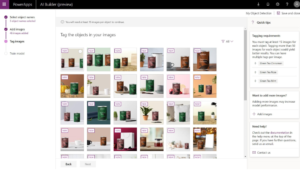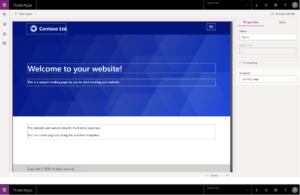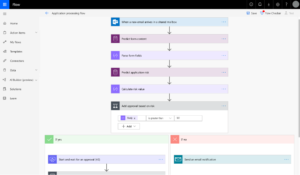On the 10th of June 2019, Microsoft announced the range of new features coming to The Power Platform (PowerApps, Power BI, and Microsoft Flow) on the 1st October 2019.
Microsoft PowerApps
Microsoft Power Apps allows businesses to create apps that convert their manual processes into automated ones. Power Apps enables apps to be built without the need for coding expertise and uses a powerful point and click approach to app development. Businesses can securely create, share, and connect their apps and external data sources such as Salesforce, SharePoint, and Dropbox, with anyone on any device, within a matter of minutes.
The 2019 release wave 2 delivers significant improvements across the features below to enable app makers to build superior apps more efficiently while supporting more progressive enterprise and administrator requirements.
AI Builder for PowerApps and Flow
AI Builder is the new no-code AI capability on the Power Platform supporting Power Apps and Power Automate. AI Builder enables you to automate processes and predict outcomes to improve business performance easily. AI Builder is a solution that brings the power of Microsoft AI through a point-and-click experience, similar to the approach of PowerApps. You can now build AI without understanding coding or data science.
Using AI is made even easier with integration directly into PowerApps and Power Automate. AI Builder brings app makers common AI scenarios that can be used to solve commonplace tasks like forms processing, object detection, and text and binary classification. AI Builder also works with Flow to help pull information and action it.

The new AI Builder enables users to easily add AI capabilities to PowerApps and Microsoft Flow
Power Apps Portals
The new Power Apps Portals capability, expected to be available as public preview next month, will allow users to create websites that external users can access either with a wide variety of identities (personal accounts or LI, for example) or anonymously.
Power Apps Portals websites are created using pre-built, customisable templates. This feature was previously only available as an add-on to Dynamics 365. It also features a revamped end-to-end experience for makers to create a website quickly, customise it, reuse page design through templates, add forms, views, and other key data from Common Data Service (CDS), and publish to users. These new features mean app makers can deliver improved web-based experiences to users, unlocking a host of business scenarios for employees, business to business (B2B) partners, and end customers.

PowerApps Portals
Intelligent automation in Power Automate
Power Automate provides a powerful visual experience for a range of users to build everything from personal automation to business-critical processes. With AI Builder makes it easier for users and organisations to optimise these processes with intelligence without knowing how AI works.
Flow makers will be able to extract meaningful data from images and text that can drive logic in their processes. Flows will also be able to automatically pick up scanned documents from an incoming email or a file server and recognise the content. Different steps can be run, based on the values in the form, like sending out notifications or performing a credit check.
AI Builder will be able to learn based on historical performance. For example, if an application proves a risk, it will be able to predict that and add more approval actions to a process.

Microsoft Flow enables users to process and route analogue forms automatically
AI builder for Power Apps is a key milestone in itself. With the AI capabilities earlier provided via Azure Cognitive Services now embedded in the citizen developer world of the Power Platform, is a significant step forward. These improved capabilities show Microsoft’s commitment to driving business transformation for their partners, customers, and users.
